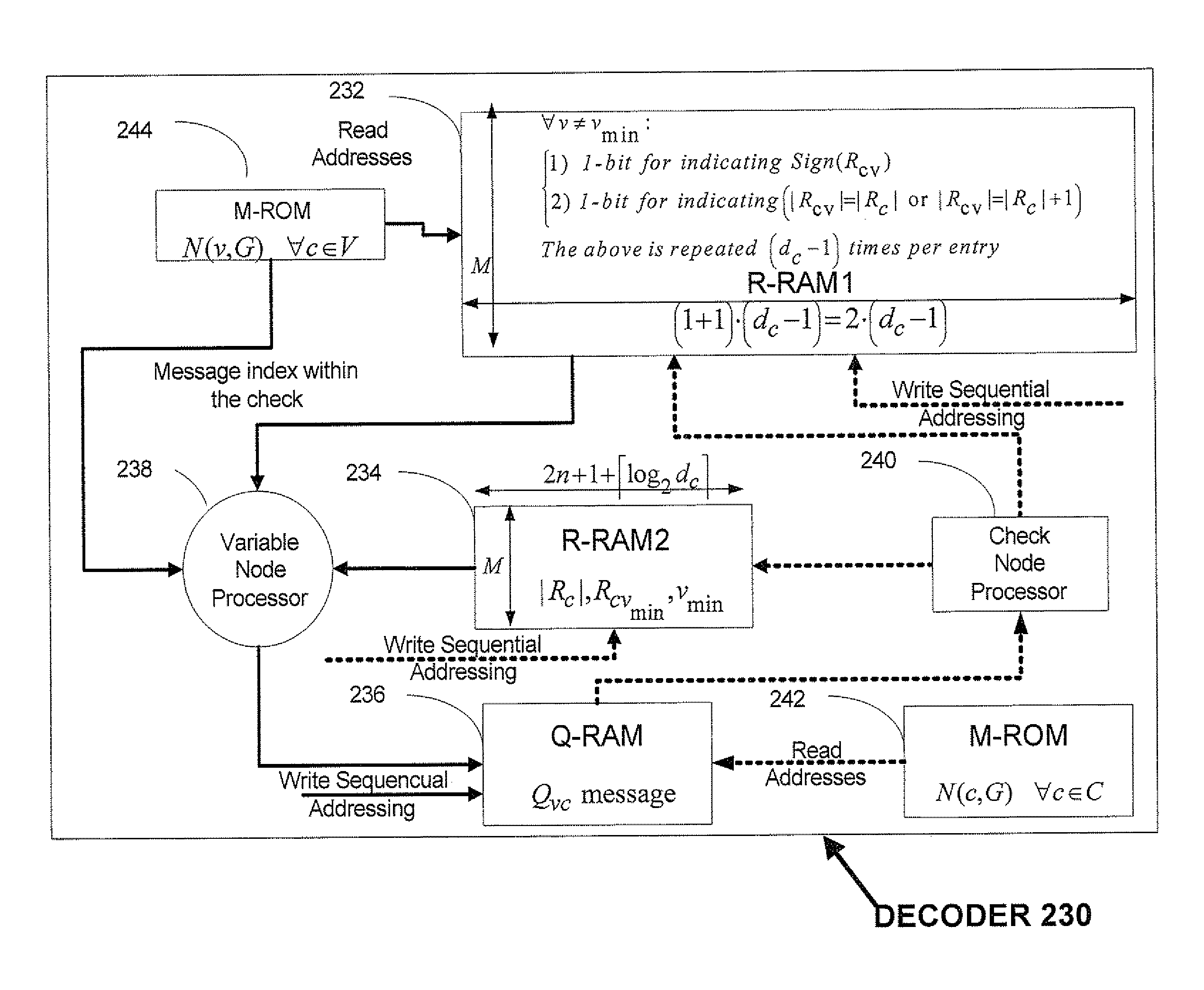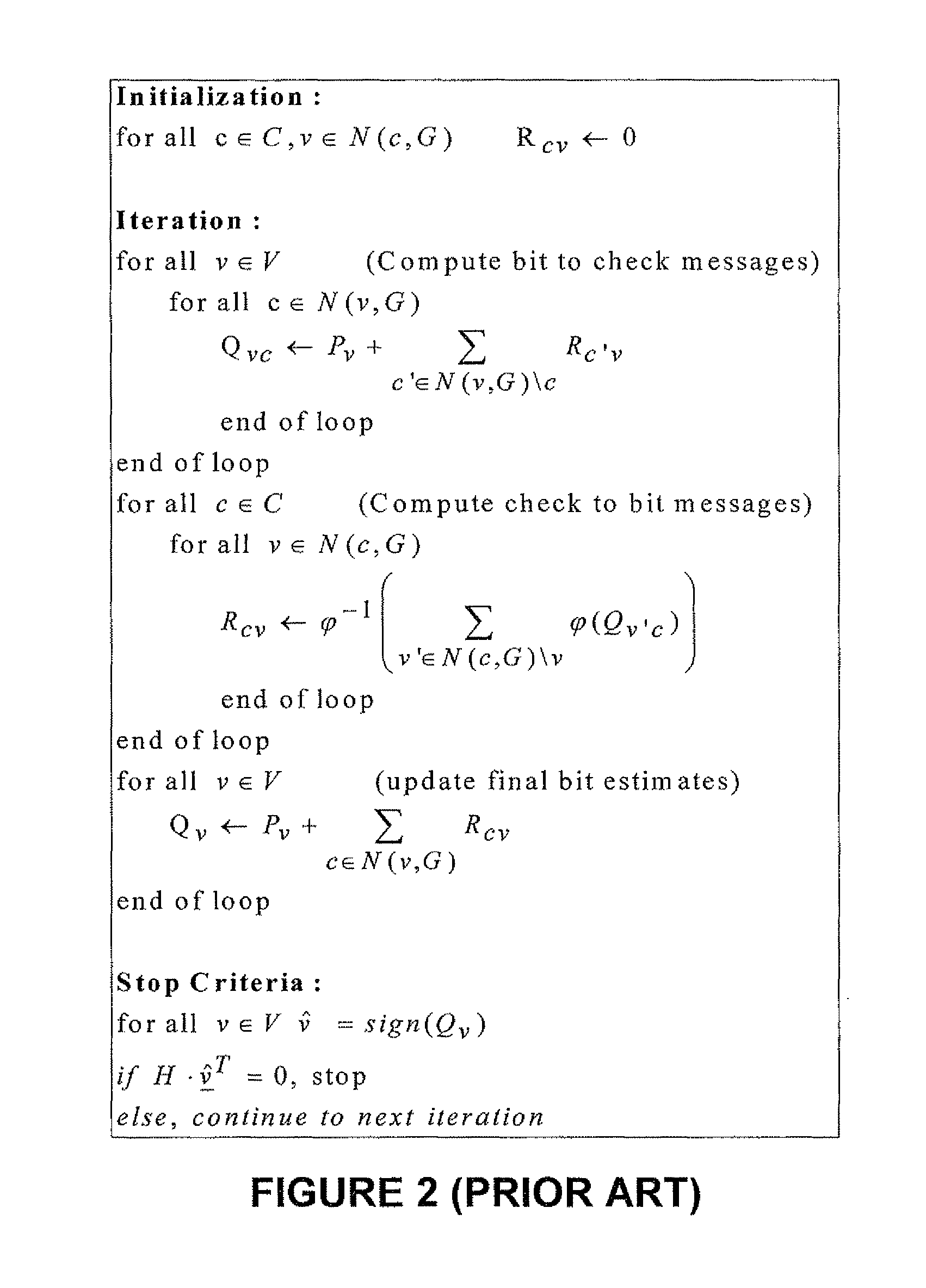Reduced complexity LDPC decoder
a decoder and complexity technology, applied in the field of reduced complexity ldpc decoder, can solve the problems of significantly corrupting the communicated or stored information, and affecting the convergence rate of the decoder, so as to reduce the complexity of the decoder, simplify the computational unit, and reduce the amount of memory required
- Summary
- Abstract
- Description
- Claims
- Application Information
AI Technical Summary
Benefits of technology
Problems solved by technology
Method used
Image
Examples
Embodiment Construction
[0098]The principles and operation of LDPC decoding according to the present invention may be better understood with reference to the drawings and the accompanying description.
[0099]The following is a description of a fixed point version of the serially scheduled BP decoding algorithm illustrated in FIG. 3 and an associated decoder that has reduced complexity in both memory and logic aspects.
[0100]Without loss of generality, we assume that the logarithm base of the LLRs used by the decoder is 2. The general method is not limited to this case, but the base 2 LLRs provide a convenient and efficient implementation of digital circuits of a decoder.
[0101]The method is based on the observation that the Rcv messages stored in the decoder memory can be compressed and represented more concisely. This observation is supported by the following theorem:
[0102]Theorem1Letvmin=argminv{Qvc,v∈N(c)}andRc=φ2-1[∑v∈N(c,G)φ2(Qvc)]Then∀v≠vminRcv-Rc≤1(3.1)
Proof.
[0103]In the special case...
PUM
 Login to View More
Login to View More Abstract
Description
Claims
Application Information
 Login to View More
Login to View More - R&D
- Intellectual Property
- Life Sciences
- Materials
- Tech Scout
- Unparalleled Data Quality
- Higher Quality Content
- 60% Fewer Hallucinations
Browse by: Latest US Patents, China's latest patents, Technical Efficacy Thesaurus, Application Domain, Technology Topic, Popular Technical Reports.
© 2025 PatSnap. All rights reserved.Legal|Privacy policy|Modern Slavery Act Transparency Statement|Sitemap|About US| Contact US: help@patsnap.com



